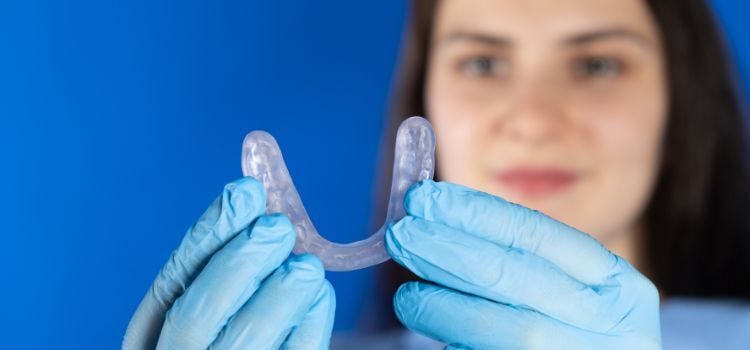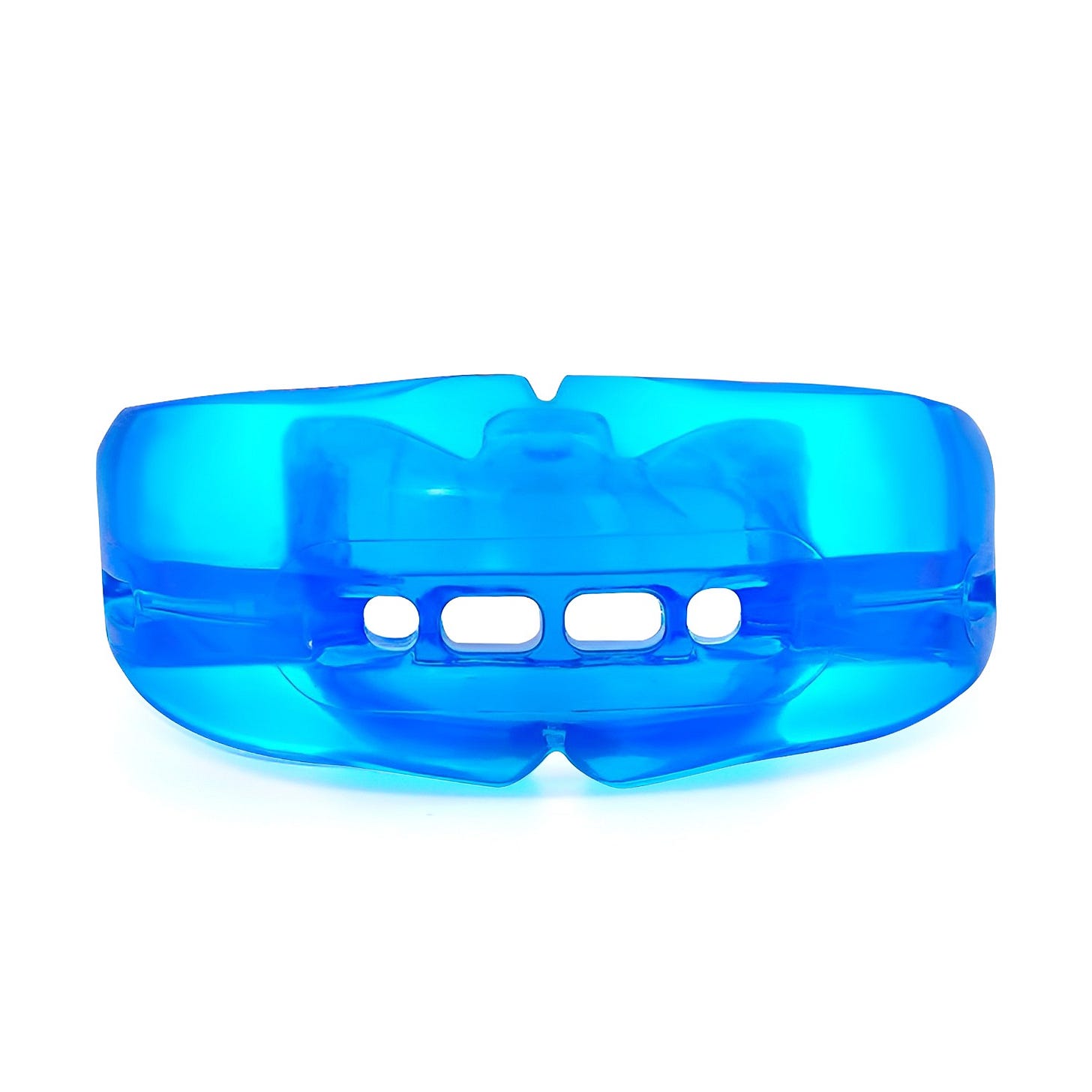Youtube
A lot of folks have asked me if Reviv is different from a custom nightguard.
And my answer is yes for a few reasons.
But it takes awhile to explain.
And so it has come high time to write a post about it.
What is a ‘Custom Nightguard’?
This term is thrown around loosely and can have various meanings based on my experience.
First, what is it used for?
Nighttime grinding or clenching
TMJ (Temporomandibular Joint) dysfunction
Protecting dental work like veneers, crowns, or implants
Alleviating jaw or face muscle pain
What Makes It "Custom"?
Made from a mold of your teeth (either at a dental clinic or via a mail-in kit)
Fits perfectly to your bite, unlike generic or boil-and-bite guards
Can be designed for top or bottom teeth, depending on your needs
What is it usually made from?
Acrylic (hard)
Dual-laminate (soft inside, hard outside)
Flexible medical-grade plastics
Where do you get one?
There are two main ways:
1. Your Dentist (In-Office Custom Nightguard)
Best for: Maximum accuracy, dental supervision
How it works: They take an impression of your teeth and send it to a lab
Price: 💰 $300–$800 (often not covered by insurance)
2. Online Custom Nightguard Services
Best for: Lower cost, convenience, home delivery
How it works: They mail you a mold kit → you bite into it → mail it back → get your guard within 1–2 weeks
Popular brands:
Remi – ~$150 (subscriptions available)
Cheeky – ~$149
JS Dental Lab – ~$130–$200
SportingSmiles – ~$100–$150
How is it different from Reviv?
1st: Fitted to the teeth
A custom night guard is fitted to the teeth whereas a Reviv is not. A Reviv is flat on the top and the bottom.
Why I don’t like when something is fitted to the teeth? Because the teeth need to be able to move as I explain in this article below.
Each day the teeth are uprighting a bit, untwisting, etc. How do I know? Because I was checking how occlusal contacts were changing each day during my experiments some years back with a ‘tracking splint’.
And if the teeth are locked into a fixed position with the nightguard then it prevents a lot of this movement from happening.
2nd: Often indexed
Many nightguards are ‘indexed’ a bit. Meaning they retain the shape of the teeth that they are covering. For example this lower guard pictured above retains the shape of the lower teeth.
I don’t like this because the teeth will most likely come together with your upper teeth in a fixed position, thereby locking the jaw into that position.
I much prefer when the top of the mouthguard is flat so that the upper teeth just sort of ‘skate’ over the top of it and don’t lock into a fixed position. This allows the jaw to move freely during the biomechanical recovery process.
3rd: Not as good of a stretch
I used flat plane splints on and off for many years back in the day. And they’re a lot like custom nightguards except they are flat in how they contact the opposing teeth.
And what I noticed was that I always progressed faster with a mouthguard like Reviv or Myobrace. Something about the way it engages the mouth and the jaw creates more of a stretch.
Closing thoughts
So there you have it. In my view a mouthguard like a Reviv (or Myobrace, Shockdoctor, etc) will always win out over a custom nightguard.
Does that mean a custom nightguard is bad for you?
Not necessarily. If it meets the following conditions than in my view it is ok:
It should be a lower mouthguard (not upper) and should be flat on top (a ‘flat plane’).
You should change it every few months to enable it to account for changes in your lower teeth. Because the lower teeth will move a bit with this process even if you are wearing the mouthguard on top of it. And by replacing the mouthguard in intervals you are allowing for continued movement.
Do I wear a custom mouthguard like this these days?
No. I don’t see any advantage to them.
They are more expensive, you need to change them more frequently, and they don’t work as fast.
There you have it.








I paid $1K to dentist for custom night guard. It now only fits to maintain my jaw in the WRONG position that involves a neck & spinal posture twist & ocular muscle compensation symptoms, all of which I have put a lot of money & effort into correcting.
The oral/spine/ocular are an interactive proprioceptive feedback balance system.
My career was in ophthalmology. Most eye Drs only care if you see 20/20. Dentists & Head & Neck pain specialists are afraid to work on another dentist’s appliance & look at me like I have two heads if I also bring visual into the equation.
The fact this appliance accommodates the interaction while correcting bite, ocular, & postural symptoms as I am working my way to feeling more grounded than ever before in my life (never knew what I didn’t know I was missing—takes up a lot of brain power when the body doesn’t feel grounded, brain power that can be freed up to live life!!)
There ARE Eye Dr’s who understand all of this & I have one who learned how to work with it at my urging. Now I finally found the oral tool that is right: Reviv.
As your body posture changes, consider the body things that have & are helping me: rolfing, whole body vibration, yin yoga.
The amazing thing about Reviv is it accommodates for any body changes without having to beg a dentist to try to understand the concept.
Helpful write up. You defined some terms that had been unclear-thank you! Happy with my Reviv progress and looking forward to trying the second version!